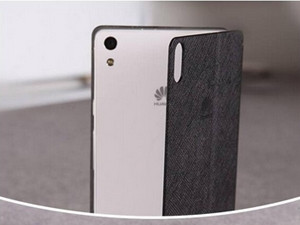
The machine-to-machine transition toward the 'Internet of Things', prioritising big data, an increase in wearable devices, and Chinese smartphone manufacturers making a real dent in the Western market - these are all part of Frost & Sullivan's mobile predictions for 2014.
According to the research company, mobile communication will continue to evolve next year, as mobile operators invest heavily in the rollout of next-generation infrastructure. The company expects the patent war to ease and wearable devices to become more prevalent.
This will lead to operators refocusing their business models to really leverage their unique position as network providers, device channels, digital service providers and trusted custodians of valuable customer data in the value chain.
Internet of Everything
The 'Internet of Everything' has made an appearance in almost all the tech prediction reports for 2014, and Frost & Sullivan's is no different. The company believes that next year, more than three-quarters of European mobile operators will offer machine-to-machine (M2M) technology.
"Market entry barriers are falling as the M2M value chain accelerates standardisation in processes, products, and services," says the report. In turn, the company predicts the increase in competitive pressures will accelerate product development and new market creation in industries such as retail and industrial automation.
"The potential for a mobile operator to carve out a critical role in a connected society, by investing more in the IT and operational technology domains, is the start of its transformation as a digital service provider. In 2014, the focus of both IT buyers and providers shifts to the Internet of Things, as more data will be generated by machines than by human beings. The explosion of Internet of Things activity in 2014 and beyond will be driven by the nexus of low-cost sensors, connectivity networks, cloud computing, advanced data analytics, and mobility.
The Internet of Everything will in turn yield much more data and increase the necessity to apply analytics to take full advantage thereof. Big data projects will increasingly be viewed as priority, and this data will be used by organisations to increase efficiency and effectiveness, stimulate revenues and innovate, says Frost & Sullivan.
"Demand for tools that can visualise this data will increase in 2014 as organisations seek to improve evidence-based decision-making. The role that mobile operators can play relates back to their networks and subscriber data, which can be aggregated, anonymised, and overlaid with relevant datasets for new applications. Eventually, operators are expected to successfully be established as trusted custodians of data."
The year of wearables and Chinese smartphones
In the past year, smartphone shipments in China increased by 103%, says Frost & Sullivan. This explosive domestic growth propelled some firms towards the top of the global market share charts. Globally, Lenovo, ZTE and Huawei are selling more smartphones than BlackBerry and Nokia, and Frost & Sullivan predicts 2014 will be the year these companies really start gaining traction in Western markets.
"Lenovo is most likely to break into Western markets in the short-term. The company has a strong innovation culture, and this innovation is burgeoning in the smartphone business with its IdeaPhone range. The wildcard, and arguably the most interesting company, is Xiaomi. Its unique business model is worth watching as the smartphone market matures globally," says the report.
Lower costs and manufacturing know-how will enable Chinese companies to survive in competitive conditions, says Frost & Sullivan.
Meanwhile, 2014 will be the year of mass-market acceptance for wearable devices. The company notes that a wearable device offers a viable alternative to handheld products, and predicts the functionality of these devices will increase.
"Previously confined to delivering only pre-programmed information, the leaps in technology now allow devices to display anything from Twitter updates to body temperature readings. New functions have emerged, and with them, new markets. Wearables are shifting from having a tech-enthusiast image to having an everyday consumer image that can be integrated with contemporary style or fit within a range of products designed for a particular purpose."
Surge in network capability
The demand for data, particularly from mobile devices, is increasingly burdening existing telecommunication networks, and new applications, services, and the Internet of Things will likely exacerbate this situation, says Frost & Sullivan.
The company foresees that while in 2014 there will be continued heavy investments in 4G infrastructure to meet the insatiable demand for data, telecoms networks will take a new approach designed around capacity, energy-efficiency, and cost optimisation.
"The network of the future has to be high-speed, scalable, secure, and reliable. Software and data can make networks intelligent, flexible, and adaptable. Consequently, the number of initiatives in software-centric networking - in particular software-defined networks - is expected to surge in 2014," says the report.
"Market leaders will emerge based on their willingness to embrace and adopt innovations in their network capabilities. Through a highly superior network quality, mobile operators will be able to avoid price wars, retain customers, and eventually create broad customer satisfaction."
Share